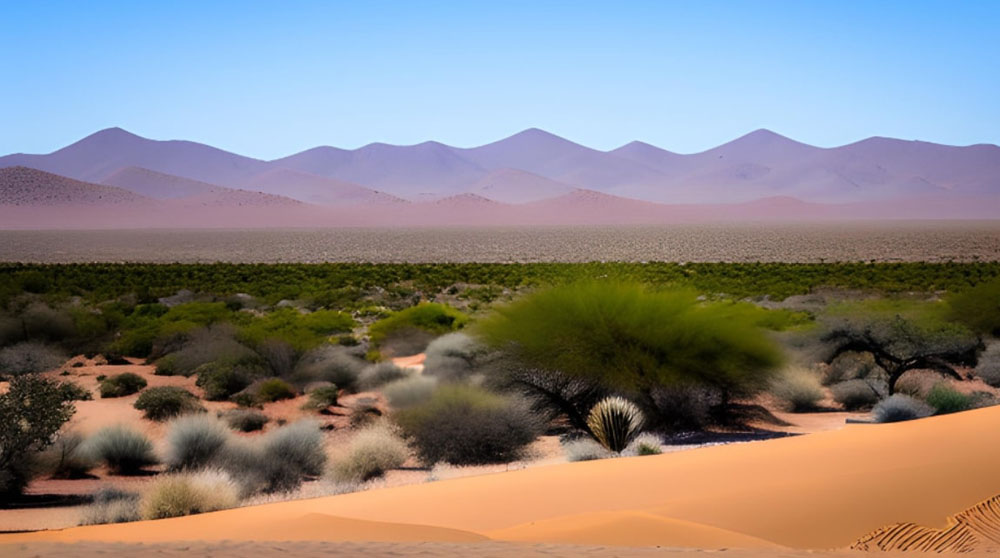
The tropical climate zone is located on both sides of the equator in the northern and southern hemispheres and is bordered by the subtropical climate zone, the subequatorial zone, and the equatorial zone. Areas with tropical climates are found on all continents of the world except Antarctica.
Definition
Tropical climate zone is a climatic zone located between subtropical and subequatorial climatic zones in the northern and southern hemispheres (except for the territories of South-East Asia, where due to the relief features the subequatorial climatic zone passes to the subtropical climatic zone). The average temperature of the coldest month does not fall below 16-18°C, precipitation is seasonal and can fall both in small and in sufficient quantities.
Subtypes
Depending on the distance of the territory from the ocean and the impact of oceanic air masses on natural conditions, two subtypes of tropical climate can be distinguished:
- Tropical wet and dry climate
- Tropical monsoon climate
Tropical wet and dry climate is widespread in the southern territories of North America (Mexico), northern territories of South America (Peru, Argentina, Brazil), northern Africa (Morocco, Libya, Egypt), southern Africa (Angola, Zimbabwe, Botswana), southern Australia.
This type of climate is characterized by hot and dry weather in the central parts of the continents. Clear weather often prevails, but dust storms with strong winds are also possible. Precipitation is rare, but heavy downpours are also possible (in the Sahara, up to 80 mm per day). The annual amount of precipitation is less than 250 mm in most cases, and in some places less than 100 mm.
In this climatic zone there are tropical deserts, such as the Great Victoria Desert in Australia, the Kalahari Desert in Africa, as well as the Sahara Desert.
Tropical monsoon climate is mild, summer weather is warm and clear, and winter is as mild as possible. Tropical monsoon climate is characterized by a small temperature amplitude, there is no seasonality of precipitation, precipitation amount is more or less stable throughout the year. The climate is characteristic of the territories of Florida, eastern Australia, and Mexico.
In coastal regions washed by cold waters currents there are relatively low air temperatures with relatively little precipitation. In areas washed by warm water currents the temperature is higher, the level of precipitation in such areas is also higher and can reach a large amount of rainfall.
Temperature
Temperature of Tropical wet and dry climate are influenced by tropical continental air masses. The average summer temperature is 30…35°C, but in some areas it can rise up to 50°C; the average winter temperature is 20°C.
The average summer temperature of the tropical monsoon climate is 30°C, the average winter temperature is 20…22°C. Under the influence of cold ocean currents the temperature in the coastal regions may be 15…20°C, the temperature in the regions washed by warm ocean currents is 20…25°C.
Precipitation
The amount of precipitation in the Tropical climate varies depending on the subtype of climate zone and geographic characteristics of the area from almost no average annual precipitation to areas with abundant precipitation.
The least amount of precipitation falls on the continental territories of tropical wet and dry climates, where in some periods precipitation may not fall at all. Close to the borders with subtropical and subequatorial climatic zones precipitation is more abundant, their level can reach as much as 100…200 mm.
The level of precipitation of tropical monsoon climate is 500…1000 mm. On islands and territories washed by warm ocean currents hurricanes and typhoons are not uncommon, in such areas the level of precipitation can reach 1500…2500 mm.
Tropical climate countries
- North America: Mexico, western regions of Cuba
- South America: Brazil, Paraguay, Bolivia, Peru, northern Chile
- Australia - central territories
- North Africa: Egypt, Algeria, Mauritania, Libya, Sudan, Mali, Chad, Niger
- South Africa: Botswana, Angola, Zambia, Namibia
- Asia: India, Saudi Arabia, Yemen, Oman